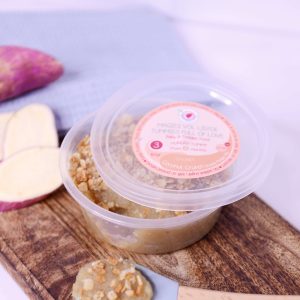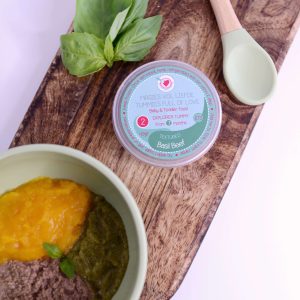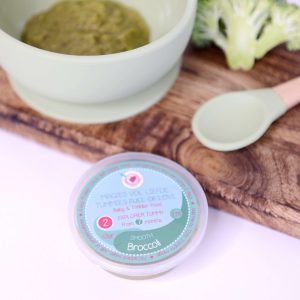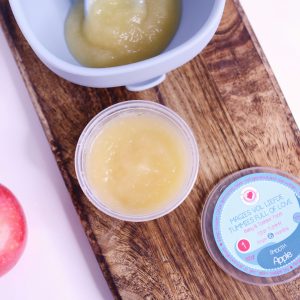by Megan Wrigglesworth (4th year Speech-language therapy student) & Isabel Schimper (Speech-language therapist & Audiologist)
The movement and coordination of the tongue, lips, teeth, jaw, mouth, and palate are called oral-motor development and plays an important role in feeding and speech development.
Several oral motor skills involved in feeding, such as sucking and chewing, nurture the development of speech. Just as with the development of big movement patterns (sitting, crawling, and walking), oral motor skills do not develop only as a child gets older, but rather when each skill is practiced. If one feeding skill is not practiced successfully the next feeding skill might not be mastered, which might consequently affect speech development.
It is important to expose your baby to different developmentally appropriate textures and that all feeding milestones are reached.
The different feeding milestones and food textures require different movement of the oral structures.
In the first few months of a baby’s life, they need to access milk through a nipple by moving their tongue in and out, called suckling. After suckling, sucking develops which is the up and down movement of the tongue, necessary for drinking other liquids and pureed foods. Chewing is the next milestone which requires a side to side movement of the tongue to move food to the teeth. Each movement pattern of the tongue is necessary for producing different sounds. The oral muscles also become stronger and movement becomes more refined, as your child is introduced to more solid food over time. The link between feeding and speech development is clear as speech production requires refined, strong, coordinated movement of the oral structures.
Apart from the importance of the development of oral motor skills, the taste of food and the utensils used also play an important role in feeding development and, therefore, speech development. A change in texture, taste, and utensils over time will help your child accept new food which will allow them to practice the different oral motor skills necessary for more advanced feeding and speech milestones. The use of different utensils will also allow your child to practice various muscles and movement patterns needed for more refined movement such as speech.
As your child moves from one feeding stage to the next, the oral structures are refined in the following ways: The lips will start to move without the movement of the jaw which is necessary for sounds made with the lips (e.g. /m/, /b/, /p/, /f/). The back of your child’s tongue will then be able to move without the movement of the jaw making the production of the sounds /k/ and /g/ possible. Next, the front of the tongue will be able to move independently from the back of the tongue and the jaw, nurturing the production of sounds: /d/, /n/, /ng/, /sh/, /s/, /j/. Finally, the middle part of the tongue will be able to move without requiring jaw movement which is needed for producing /l/ and /r/ sounds.
It is, therefore, essential for your child to move through the different stages of feeding, where new tastes, textures, and utensils are introduced to promote oral motor development and speech development.
You can use the following table as a guideline for feeding development of your child:
Age | Feeding Milestone |
4 to 6 months | – Eats pureed fruit and vegetable baby food – Eats from a small baby spoon |
6 to 9 months | – Holds a bottle independently – Eats pureed meat and other baby foods |
9 to 12 months | – Begins to self-feed using fingers – Drinks from a Sippy cup – Begins to drink through a straw |
12 to 18 months | – Begins to eat finely chopped table foods – Bites through crunchy foods (e.g. cookies) – Moves food from one side of the mouth to the other when chewing |
18 to 24 months | – Feeds themselves using a spoon |
24 to 36 months | – Eats a variety of liquids and solids through straws and open mouth cups |
As every child is unique, their feeding journey comes with its own joys and tribulations. Take heart . . . your child will learn to tolerate different textures and tastes over time. If you need assistance, don’t hesitate to contact a speech-language therapist in area to support you and your child through this process.
YOU CAN DO IT, MOM!
Sources:
- Manno, C.J., Fox, C., Eicher, P.S. & Kerwin, Mary Louise (1996). Early-oral-motor intervention for pediartic feeding problems: what, when and how. Faculty Scholarship for the College of Science & Mathematics
- Ayano, R., Tamura, F., Ohtsuka, Y. & Mukai, Y. (2000). The development of normal feeding and swallowing: Showa University study of feeding function. International Journal of Orofacial Myology, 26, 24-32
- Sampallo-Pedroza, R.M, Cardona-Lopez, L.F, Ramirez-Gomez, K.E. (2014). Description of oral-motor development from birth to six years of age. Rev Fac Med, 62(4): 593-604








